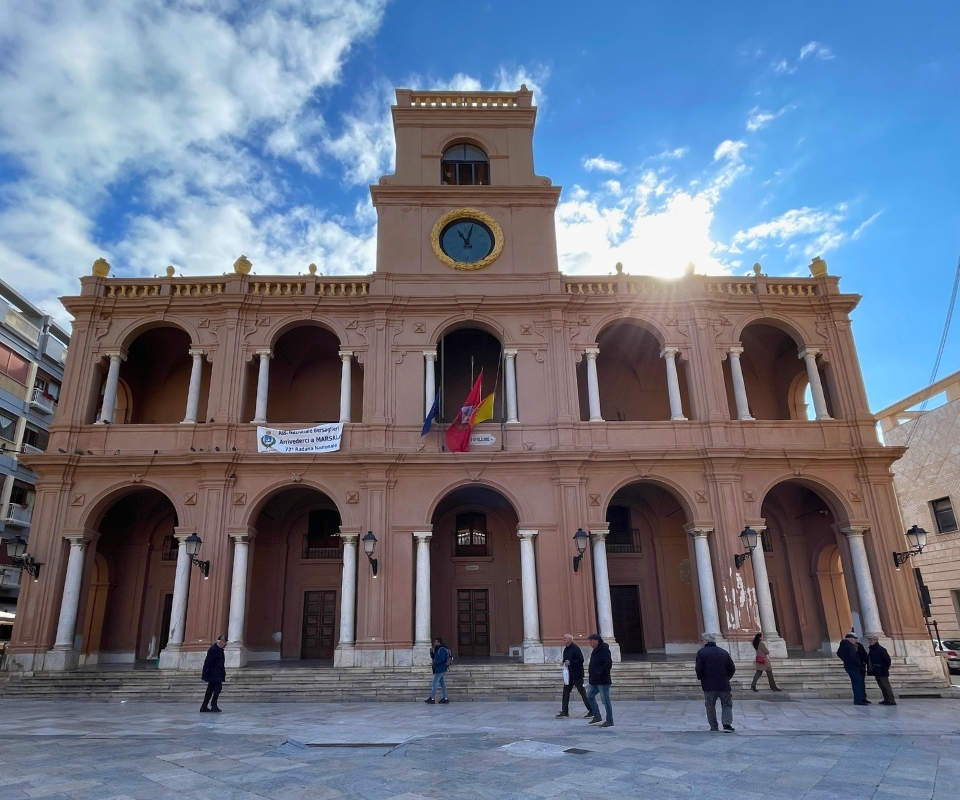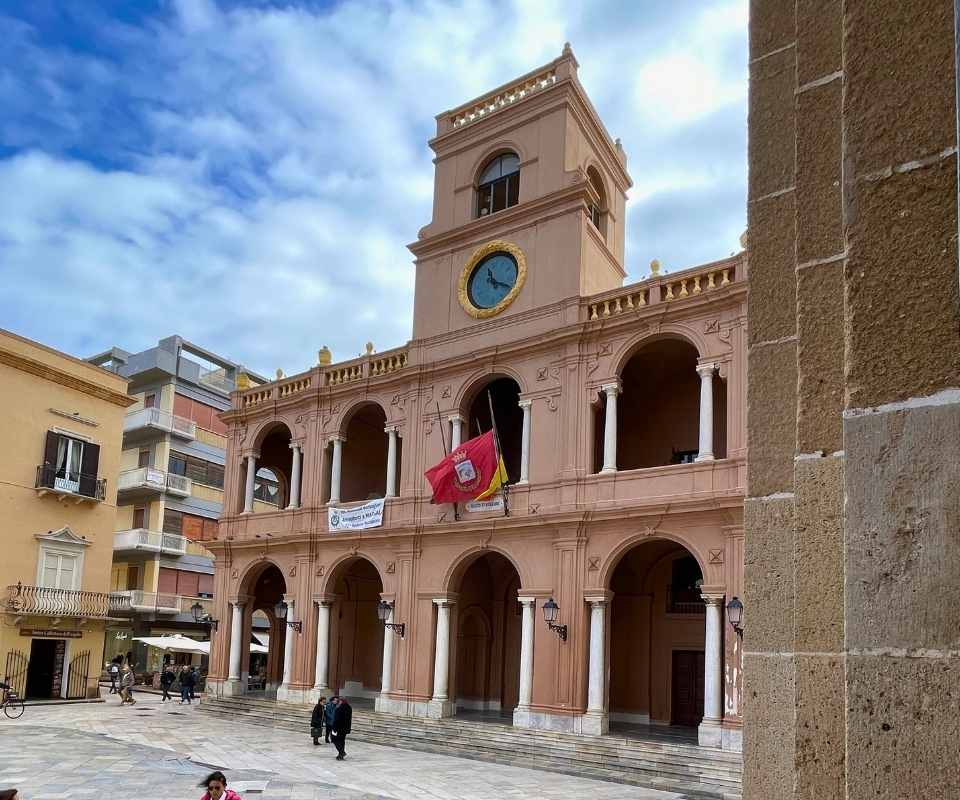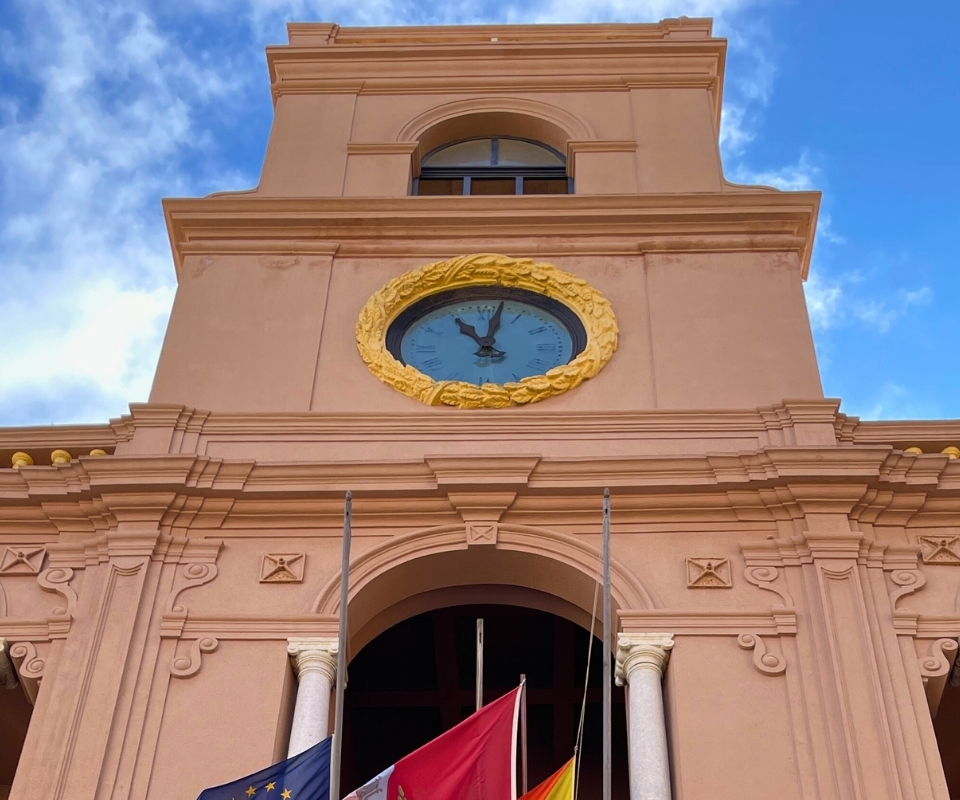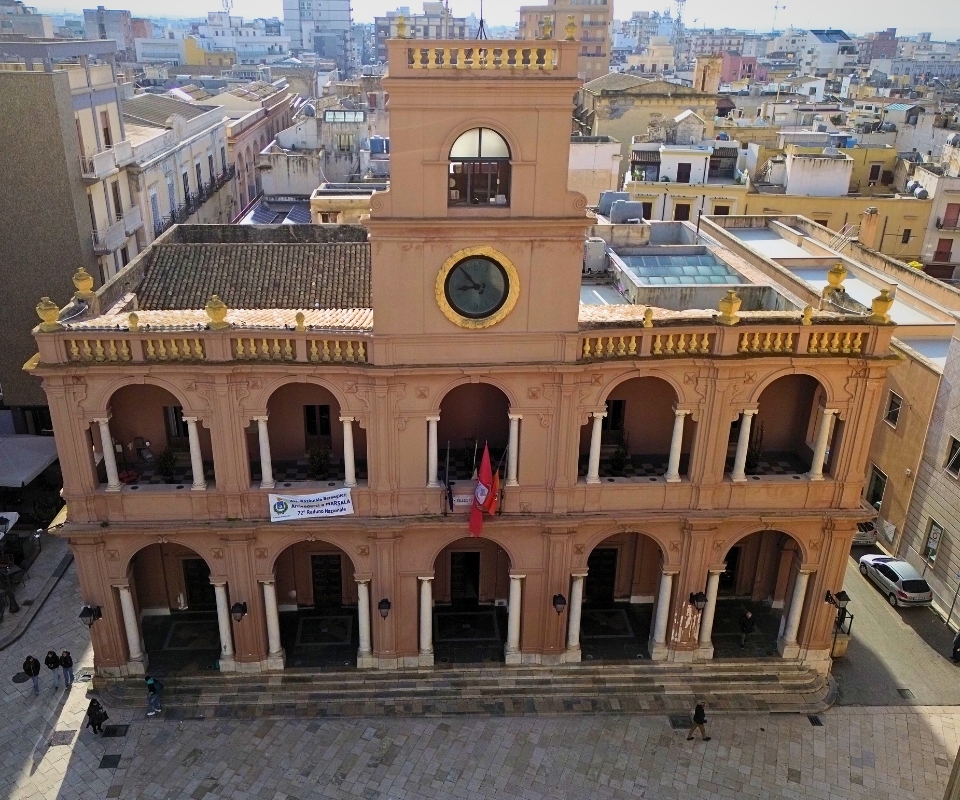On the northern side of Piazza della Repubblica, the long arcaded façade of Palazzo VII Aprile extends, one of the most important civic buildings in Marsala. Also known as Palazzo del Municipio or formerly Palazzo dei Giurati, it was erected in its current form between the late fifteenth and sixteenth century to host the meetings of the City Senate, also known as the Civic Council, and the local judiciary.
Its harmonious architecture, designed by Giuseppe Moccia from Trapani, was inspired by the Venetian Renaissance style introduced by Andrea Palladio, as seen in the characteristic round arches supported by columns, known as serliana arches, which define the long loggia on the first floor. The initial construction was completed within the sixteenth century, later expanded and refined in the eighteenth century with the addition of the clock tower with a square base and additional arches, ultimately shaping the elegant two-story building we see today, with a porticoed ground floor.
The façade, plastered in a light color, features a double row of arches: on the ground floor, an arcaded portico supported by stone pillars has provided a shaded refuge for passersby and merchants since ancient times; on the upper level, the true Loggia, a gallery of arches spaced by columns, overlooks the square. Above the cornice, the public clock rises, originally installed in the sixteenth century and fitted with a bell in the seventeenth century by the city magistrates. This clock, with its Roman numerals, still marks the hours of the city today, and in the past, its chimes also signaled alarms and special events for the community.
The architectural ensemble is both sober and solemn, worthy of an institutional headquarters: the portico has historically served as the civic forum, a place for public assemblies and official proclamations, while the interior halls, such as the Sala delle Lapidi, so called for the numerous historical inscriptions embedded in its walls, continue to host the meetings of the City Council.
The name Sette Aprile was given to the palace in memory of a crucial episode of the Marsala Risorgimento. On that date, a group of patriots rose against the Bourbon government, inspired by the simultaneous Revolt of the Gancia in Palermo. The rebels gathered inside this very building, then known as Palazzo dei Giurati, and declared their adherence to the ideals of Italian unification, displaying the tricolor, the future Italian flag, from the loggia in open defiance of the Bourbon authorities.
The reaction was severe: many insurgents were arrested, and others were forced to flee or go into hiding, but that date remained engraved in the city’s memory as a symbol of patriotic courage. Only a few weeks later, Marsala would be liberated by the arrival of Garibaldi, and it was precisely Garibaldi, on the evening of his landing, who found shelter together with his Thousand under the arcades of Palazzo VII Aprile, where they spent the night in refuge before departing at dawn for Salemi. These events indissolubly link the palace to national history, and it is no surprise that even today, passing beneath its vaults, one can almost sense the echo of voices and footsteps from that fervent time.
In the twentieth century, the building suffered damage during the bombings of the Second World War, when a nearby adjacent tower was destroyed, but it was restored in the postwar period, regaining its central role in city life.
Today, Palazzo VII Aprile is home to the City Council and is open to the public for institutional visits and events. Its arcades continue to host cultural events, including concerts, art exhibitions, and civic ceremonies, just as they did in the past for public speeches and popular celebrations.
Observing Piazza della Repubblica from the upper loggia of the palace, when possible, offers a privileged perspective over the historic center of Marsala. Inside, among coats of arms and commemorative plaques, one can feel the continuity of Marsala’s administrative life through the centuries.
Palazzo VII Aprile, with its historical and architectural dignity, thus represents not only a place of artistic interest, but also the symbol of civic participation and the city’s identity.
360° Virtual Tour
How to get there






